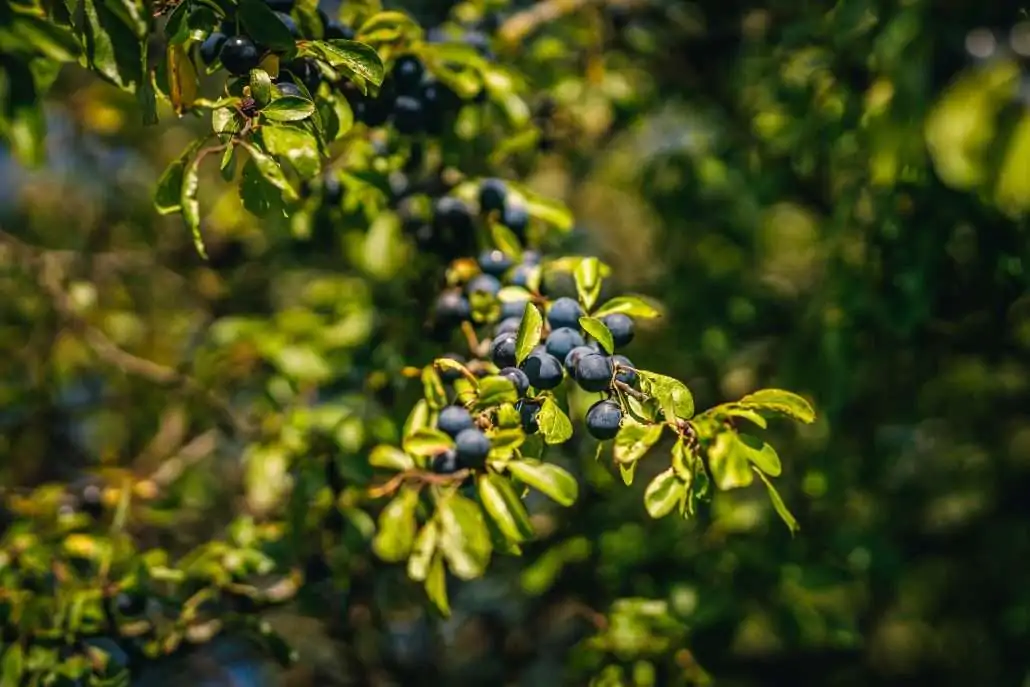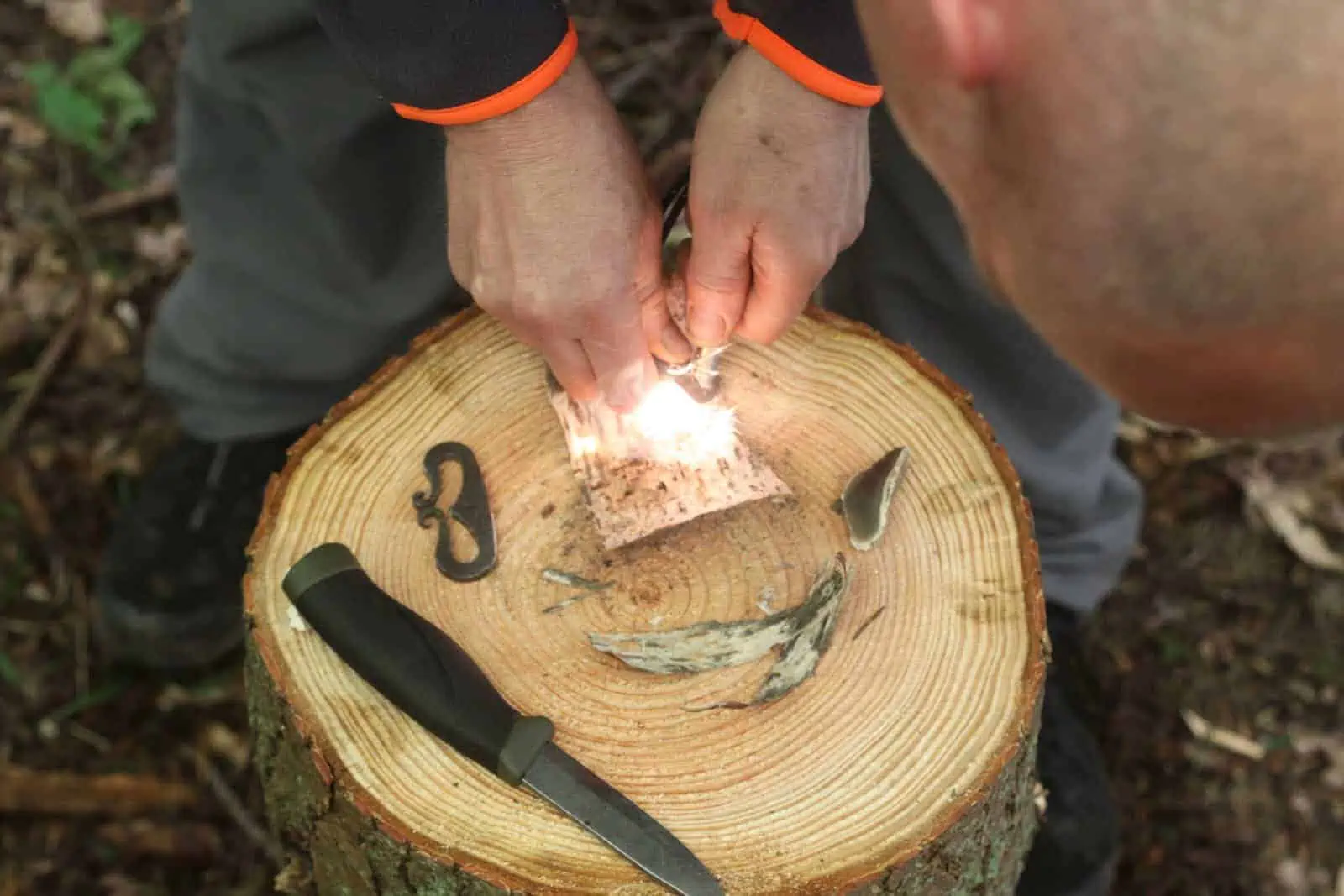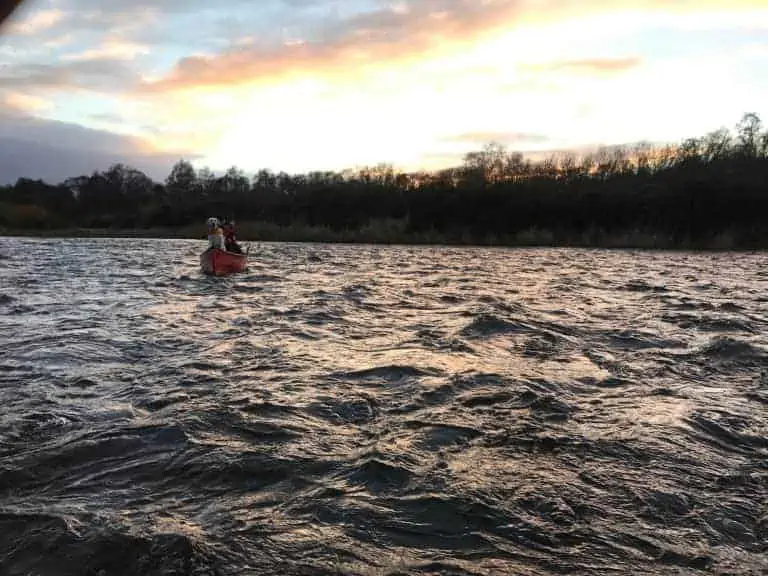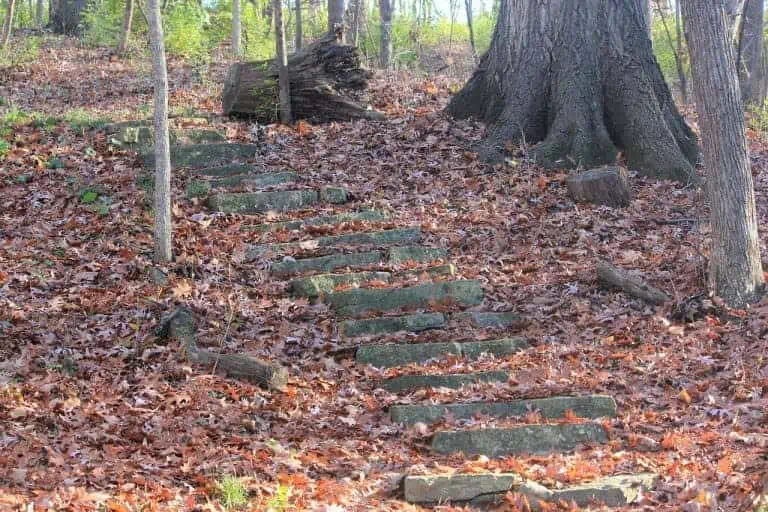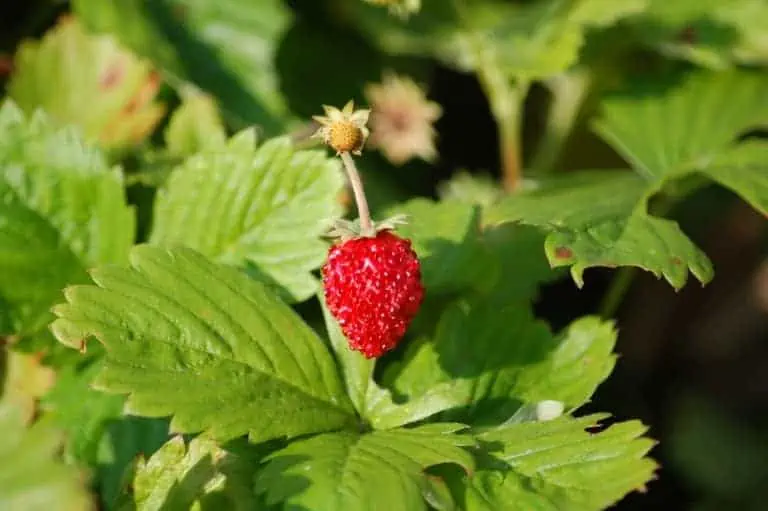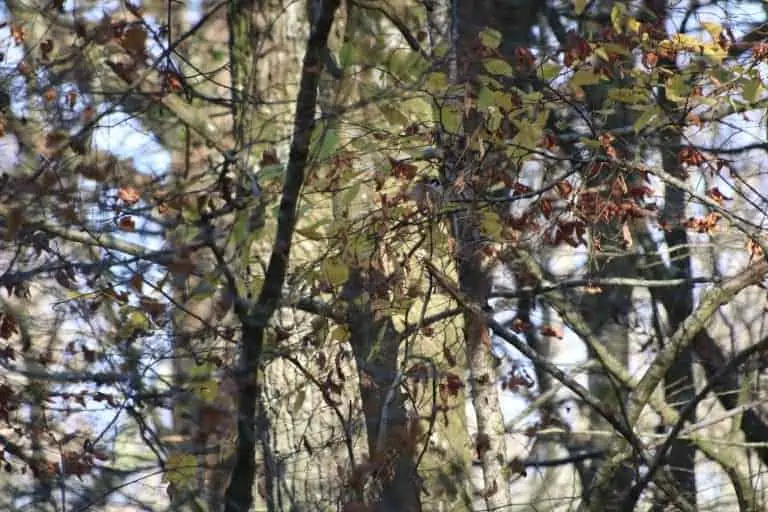Ten Winter Forage-ables
After the abundance of Summer and Autumn, Winter can seem a little sparse before Spring’s burst of life. But don’t despair, there are some tasty winter forage-ables out there, you just need to know where to look.
Some of late Autumn’s easy berries and nuts will still be around, as long as the wildlife haven’t beaten you to them!
1. Rose Hips
Rose hips are the fruit of the rose plants, and can be found both cultivated and growing wild amongst hedgerows, woodland and on scrubland too as well as parks and gardens. The rose hip can vary in shape and size depending on the species of rose plant they are growing on, but as with all forage-ables, always be 110% sure of your plant identification before ingesting them.
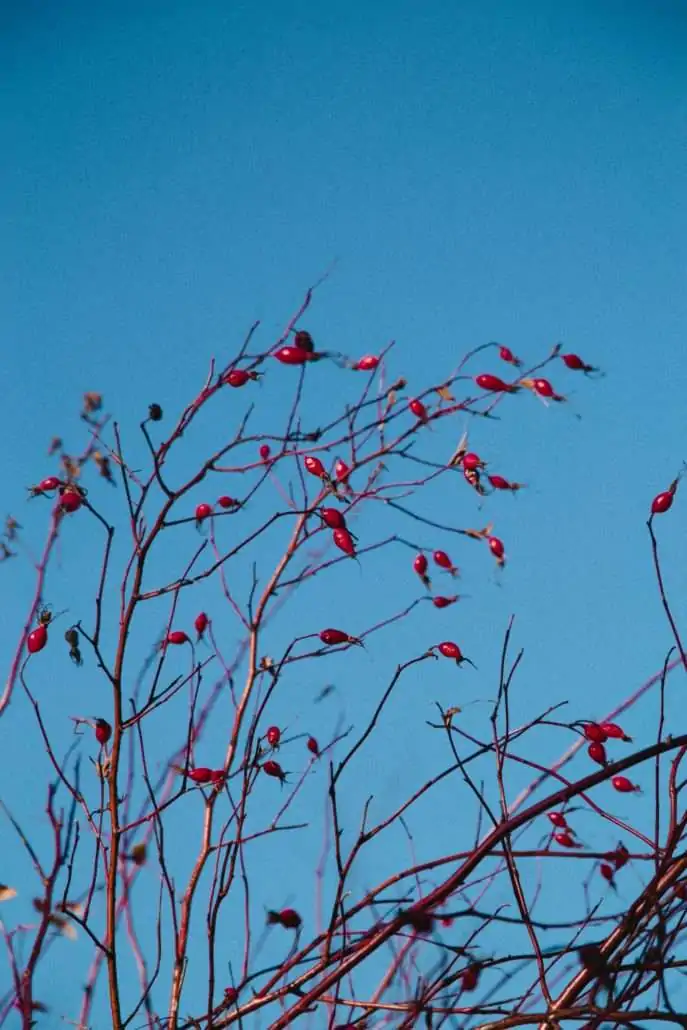
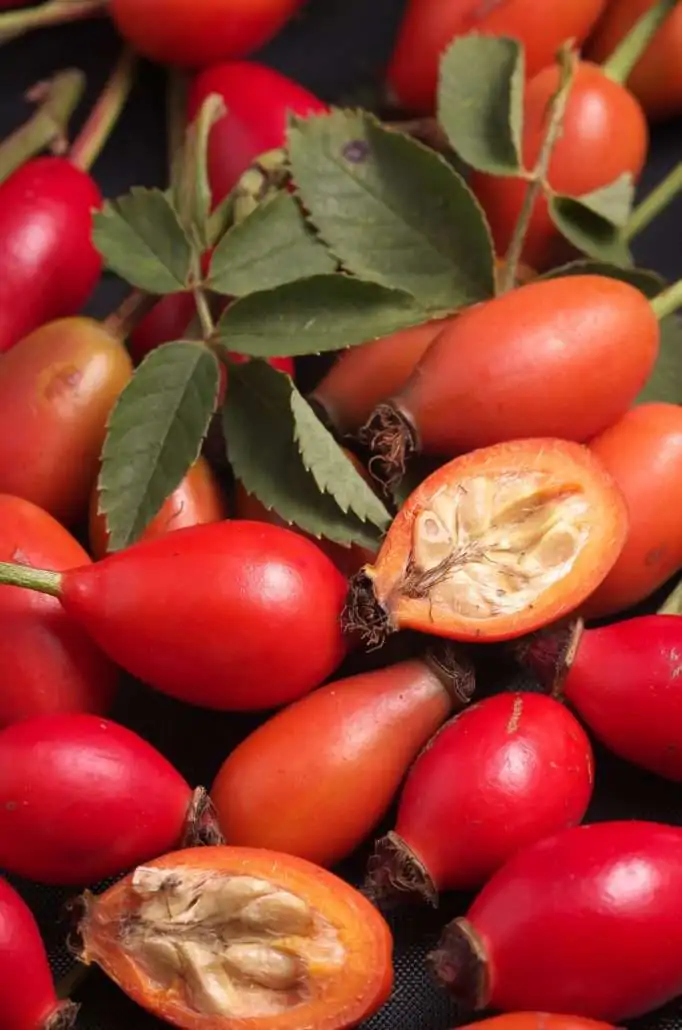
These bright red gems are packed full of nutrients and can be made in to tasty syrups, jams and jellies. When dealing with rose hips it is vital to remember to remove the tiny hairs that are around the seeds in the fruit. These tiny hairs are irritants and act in an “itching powder” effect, so you definitely don’t want to be ingesting those!
Some say that rose hips flesh can be eaten raw but this is an easy way to give yourself digestive distress so it is advisable to eat them cooked.
2. Crab Apples
Found in woodlands, hedgerows and gardens, the Crab Apple is the relative of the cultivated eating apple, and though similar in taste, just a little more bitter, they are best eaten cooked.
Crab apples are high in pectin so are great fruit to turn in to jams and jellies, and to also combine with other fruits that are low in pectin for a more successful jam batch.
Growing to the size of a golf ball, crab apples come in a variety of colours from yellow to green, pinks and reds.
Forage-able from October, many can still be picked well in the December. And as with many fruits they are said to taste better and be far juicier after the first frost.
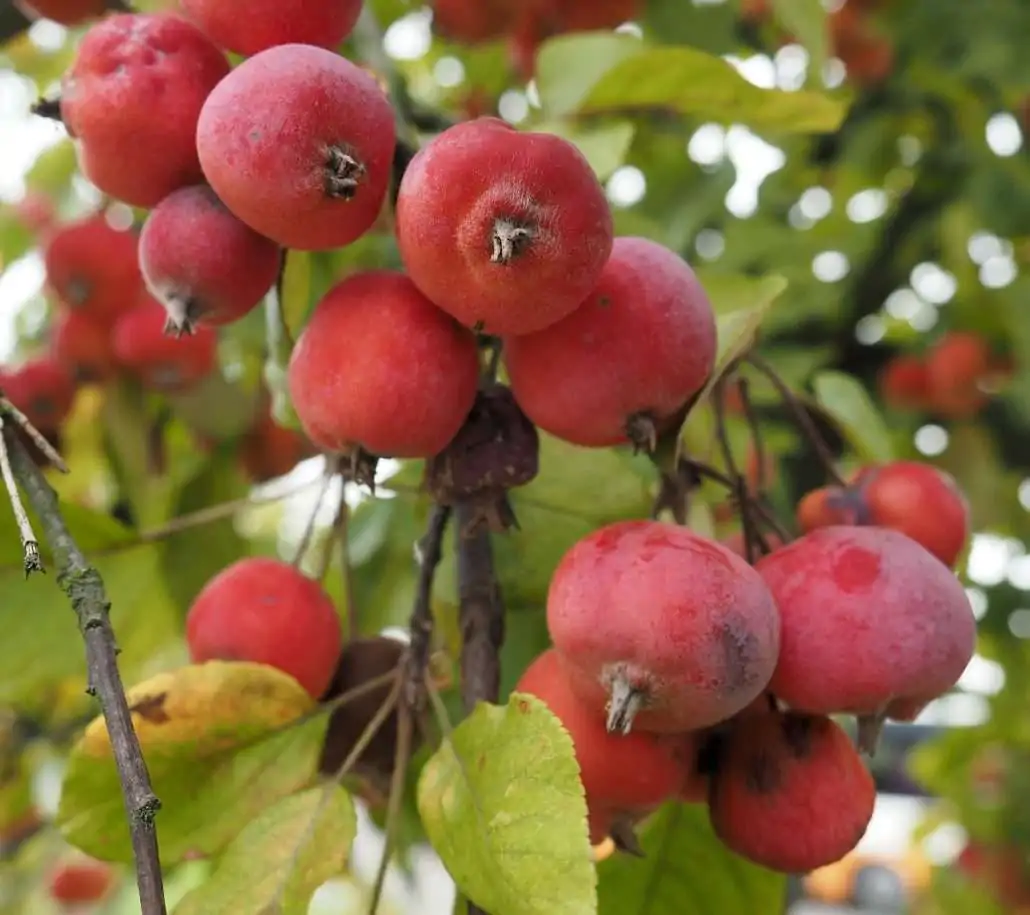
3. Haw Berries
From October onwards, the berries of the Hawthorn tree, known as Haws, are bright, vibrant and easy to identify. Found in hedgerows, woodland, parks and scrubland the Hawthorn produces fantastic edibles at different times of the year, but the berries are amazing.
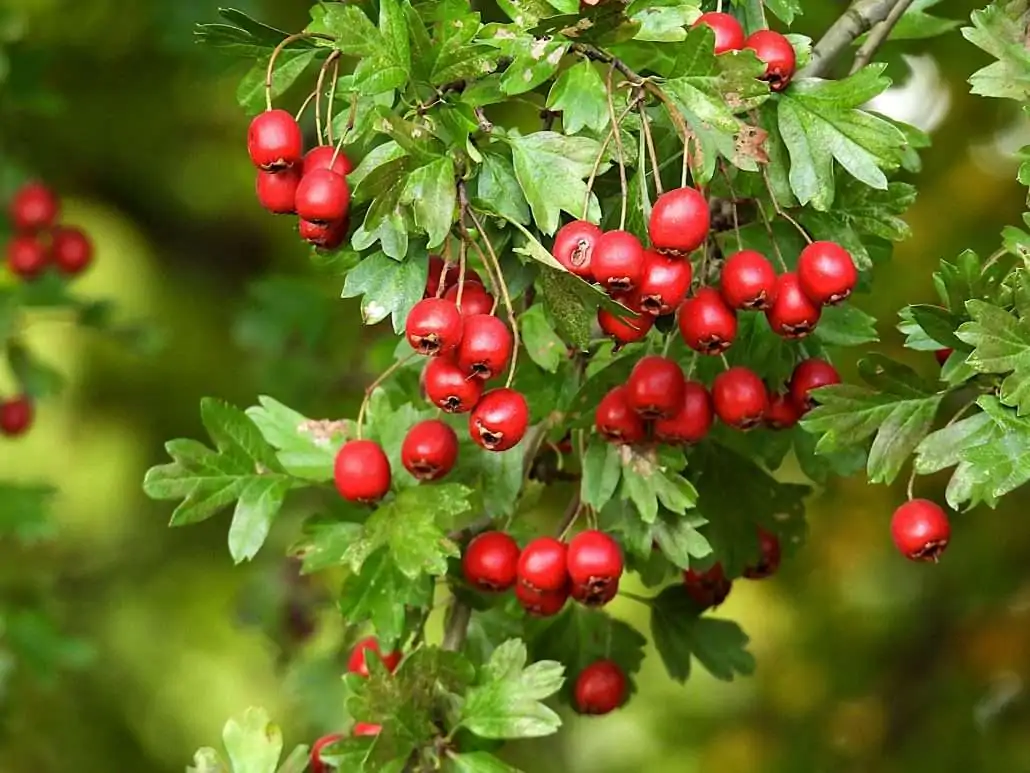
Don’t forage these berries too early though, as if they are not completely ripe they can be dry and bitter. They are best foraged after the first frost, or if you have picked them to soon just store them in the freezer before using, this help make the flesh more tender and juicy. But after this they are great for making hedgerow “ketchups,” jams, jellies and fruit leathers.
BUT the seeds of the haws contain a cyanogenic compound called amygdalin, so if you chose to eat the berries straight from the tree be sure to spit the seeds out. Because of this is is advised to eat the berries cooked, then you can strain the seeds out far easier and leave yourself the juice and berry pulp to turn in to something delicious.
4. Sweet Chestnuts
The small spikes spheres of the sweet chestnut start to develop in early autumn. NOT to be mistaken with the NON-edible horse chestnut, the spiky green spheres will continue to grow and develop well into October, when they should be ready to forage well in to the winter months, as long as the wildlife don’t get there first.

Once ready, the sweet chestnuts should be dark brown in colour with a smooth shiny shell once they are removed from the protective spiky green outer casing you see on the tree.
Sweet chestnuts can be eaten raw by most people, but they are high in tannic acid which can cause digestive irritation to some, and should be avoided by this with liver and kidney conditions. This tannic acid is broken down through the cooking process.
These gorgeous nuts taste amazing roasted! Simply score the brown skin with a knife and place them in a pan over the fire, or on a baking tray in the oven. Once roasted the skin will start to peel back where the skin has been scored with the knife. Leave to cool a little and then peel off the dark brown skin and season with a little salt. These taste amazing as a nutritious snack or can be added in to different recipes, such as chestnut and cranberry stuffing with your next roast.
5. Garlic Mustard/ Jack By The Hedge
There aren’t many leafy green edibles that thrive through the winter months, but Garlic Mustard has a natural “anti freeze” in its leaves allowing it to cope with the harsher win term months.
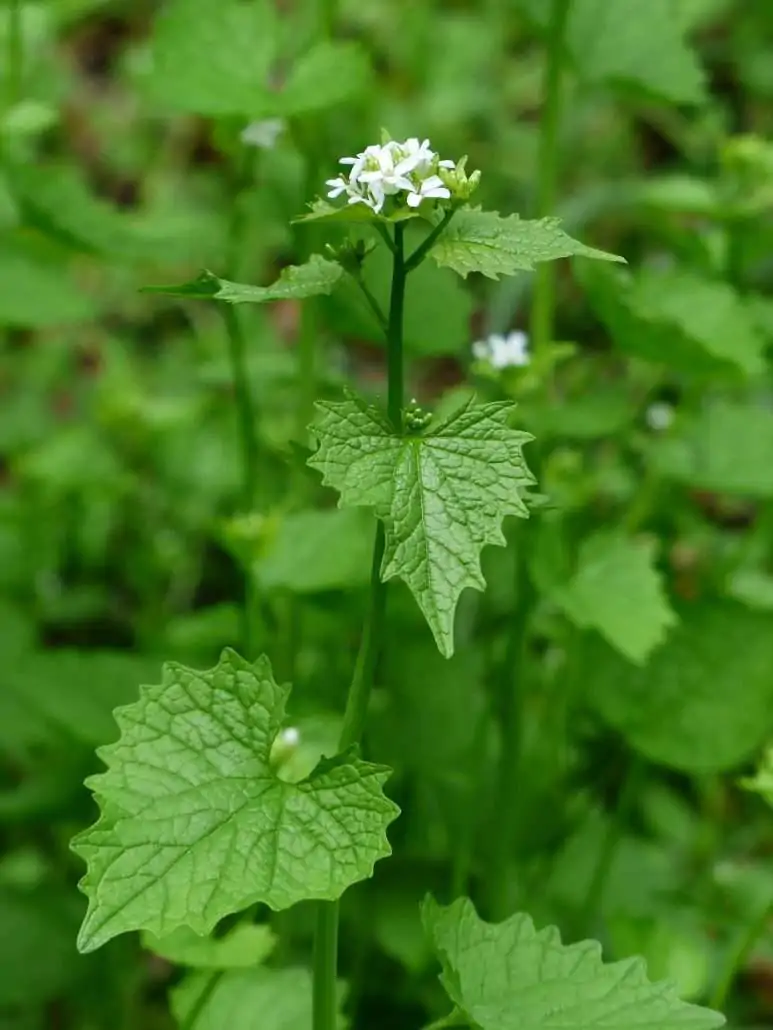
Though the tender spring leaves taste the best, the winter months still have the distinctive peppery garlic flavour that we all love about this plant. The winter leaves work well in soups and stews, just add them near the end of cooking to prevent them becoming bitter.
Garlic mustard is often found in abundance, and thrives in shady woodlands and hedgerows.
There are a few plants with smilier shaped leaves, so as always be 110% sure of your plant identification before tucking in.
6. Pine Nuts
One of the later nuts that remains a great winter forage-able are the tasty pine nuts. Easy to identify and packed full of nutrients, these are a great winter forage-able.
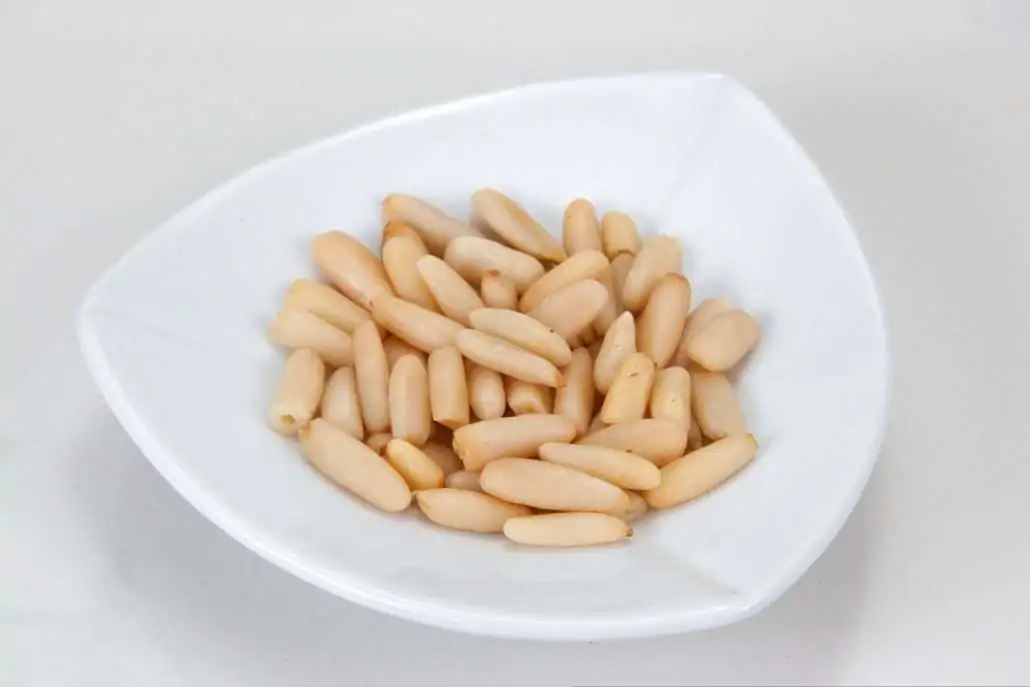
Pine nuts can be gathered by simply collecting pine cones and shaking the pine nuts out of them. Any pine cones that haven’t opened yet can simply be placed next to the fire for a few days to slowly open.
Although pine nuts can be eaten raw, the flavour is improved by roasting them. They are packed full of monounsaturated fats and fat soluble vitamins to pack a nutritional punch, along with their protein levels too.
Pine nuts taste great simply roasted as a snack with a little seasoning, or can be added to different recipes, and of course can be used as the base for some tasty pesto.
7. Walnuts
Found in woodland, mature hedgerows, parks, gardens and wasteland, the impressive Walnut tree produces some distinctive and tasty edibles. The green globe of the walnut fruit appears in late summer. The fleshy green vibrant in colour with white spots can be foraged and pickled in late summer. But left to develop they cultivate fantastic walnuts inside the green globe casing. By early autumn the hard outer casing of the nut has formed within the green fruit and the green flesh then starts to darken. From October in to December the nuts will be forgeable and ready.
Once foraged, and the outer green body and nut shell are removed, the walnut can be eaten raw. Packed with healthy fats and minerals these are a great edible.
As with many nuts the taste is improved when roasting and can be enjoyed as a snack or added to recipes. Walnuts work well with wild garlic made in to a pesto for a great tasty sauce on fresh steaming pasta.
8. Pine Needles
To be honest, these shouldn’t just be reserved for winter. Pine needles are packed full of Vitamin C, and a hot mug of pine needle tea will help to relieve a sore throat and a chesty cough.
Pine needles have a fantastic flavour and steeped in hot water and left to brew in to a tea is an energising warm drink for the winter months.
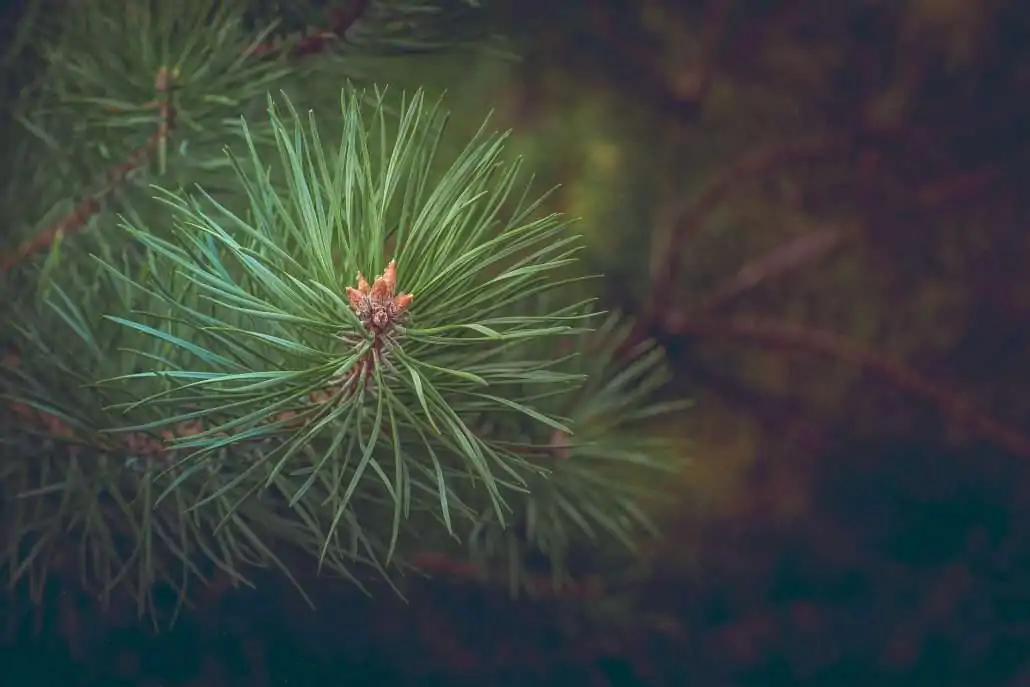
There are a few things to consider when foraging pine needles though. Firstly, make sure they are definitely pine needles! As always, be 110% sure of your plant ID, be sure it is definitely a pine tree and NOT a Yew tree…we have seen people get these trees mixed up and this is NOT a mistake that you want to be making! Look at the whole tree to help you identify it, the bark, the cones, the tree shape and smell the needles too….this sounds obvious, but it should smell of pine!!
Secondly, don’t pick the shoots from the top of a young tree, this will impact the tree’s growth, and this is not responsible and sustainable foraging. Thirdly, don’t over forage from the same tree, take a little from multiple trees over a wider area, this will minimise the risk of having an impact on the local environment, and don’t take too much.
9. Nettles
The young nettle leaves forage-able in spring taste light and fresh, but the darker leaves found in winter have their own lovely flavour too. Nettles make a highly nutritional addition to soups, stew and stir fries as well as making a great tea.
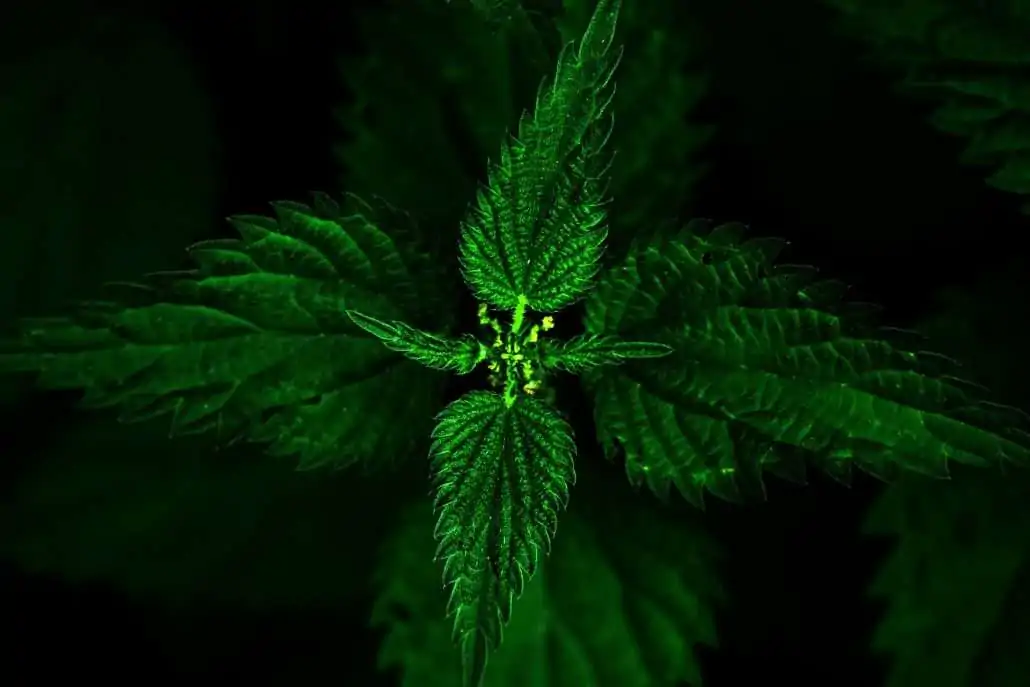
Nettle leaves are high in iron as well as Vitamin C which in turn helps the absorption of iron in your body, so a great winter green to add. They also act as a great tonic when in tea form, reportedly helping a number of ailments such as mild respiratory conditions, seasonal allergies and some report an improvement in joint pain too.
When harvesting nettles many prefer to wear gloves to prevent stings from the irritating hairs found on the leaves and stems. These chairs aren’t a problem once the nettles are cooked, though some claim they can eat leaves raw without a problem, such as at the “nettle eating contests”…….each to their own I suppose!
10. Bullace
Small fruits, often referred to as Wild Plums, bullace can be a variety of colours including “white,” which is actually yellow, green and black, but are most commonly a similar colour to sloes and damsons, which is why they are easily confused with these fruits.
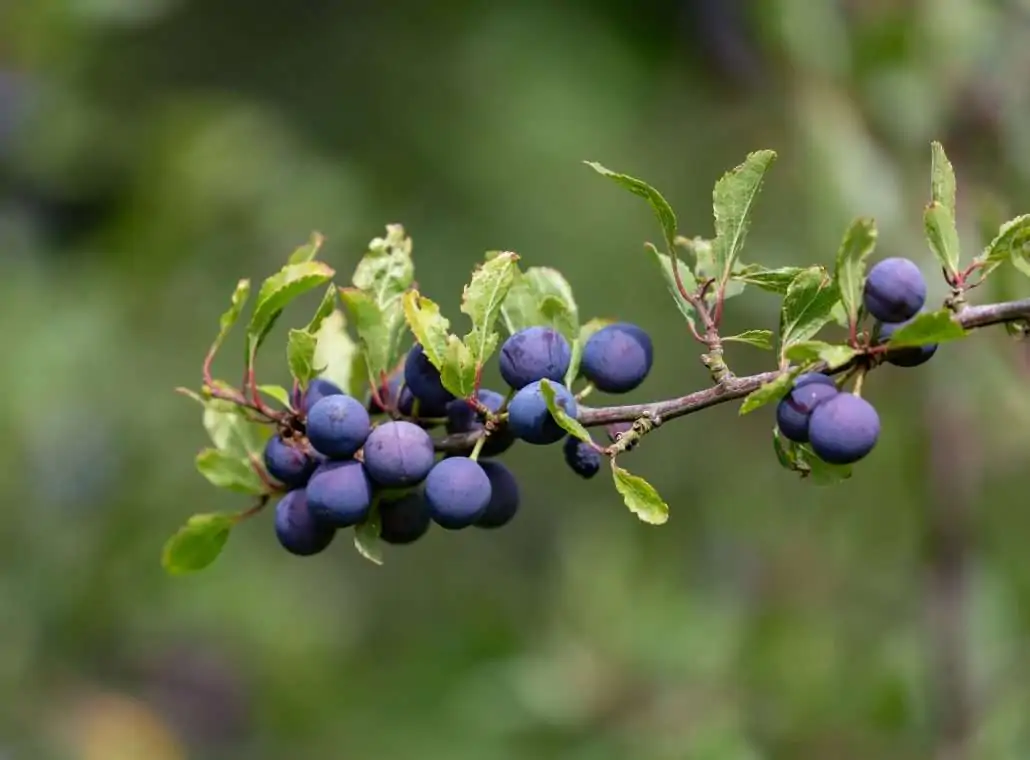
On a good year bullace can be in such abundance that they weigh the tree down. And similar to sloes and damsons, can be found amongst mature hedgerows, in woodland, wasteland and mature gardens.
These little fruits have a tart flavour so taste better cooked and work well in pies, crumbles, jams, chutneys and alcoholic drinks. You can use the same recipe for sloe gin to make bullace gin, or combine the fruits for a great flavour.
The shape of the tree is very much like the classic plum tree, and the leaves are a similar shape too, but still always double check your plant identification.
So although many plants look sparse during the winter season, if you look in the right place there are still many winter forageables to be found.
It is vital to remember though, always double, or in fact triple check your plant identification. Never get over confident, even the most experienced can make mistakes, so be sure before you eat.
Also remember to forage responsibly and sustainably. We all have a responsibility to take care of the wildlife and their habitats and preserve the delicate environments around us. Wildlife rely on a lot of plant life for their survival, so only take a little of what you need, and vary your patch of picking too. Be considerate of the plant’s next stage of its life cycle, and the next generation of that plant species too. If we take all the berries from that plant then its seed will not be sown. If we take all the leaves from one plant, it can’t photosynthesise and thrive.
So let’s work together. Let’s forage responsibly and sustainably. But with all that in mind, get out there and enjoy those tasty winter forage-ables.
